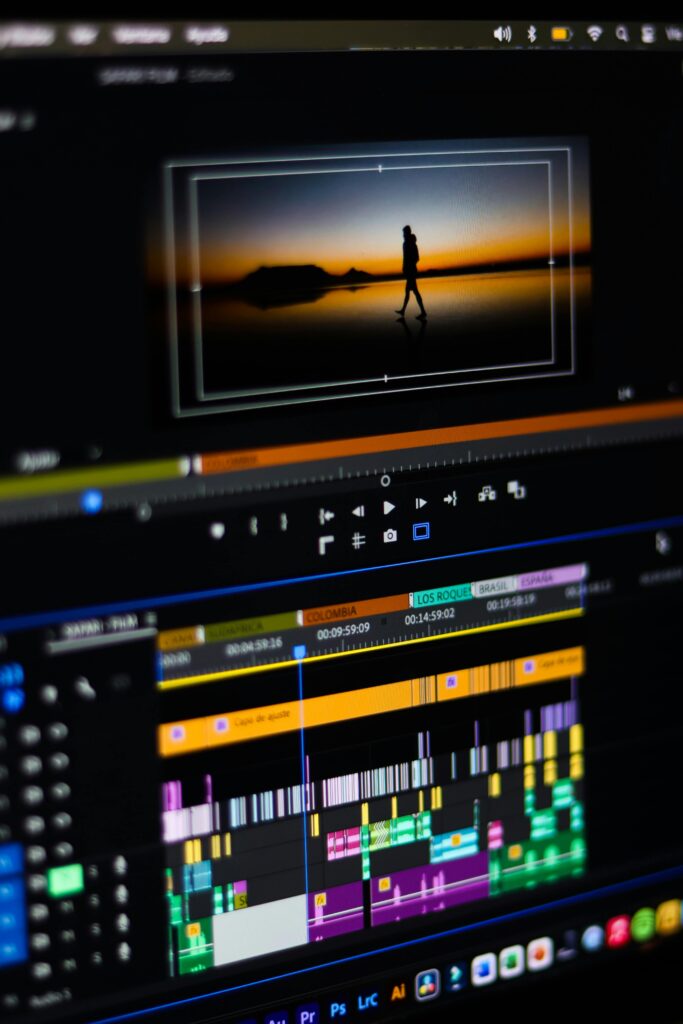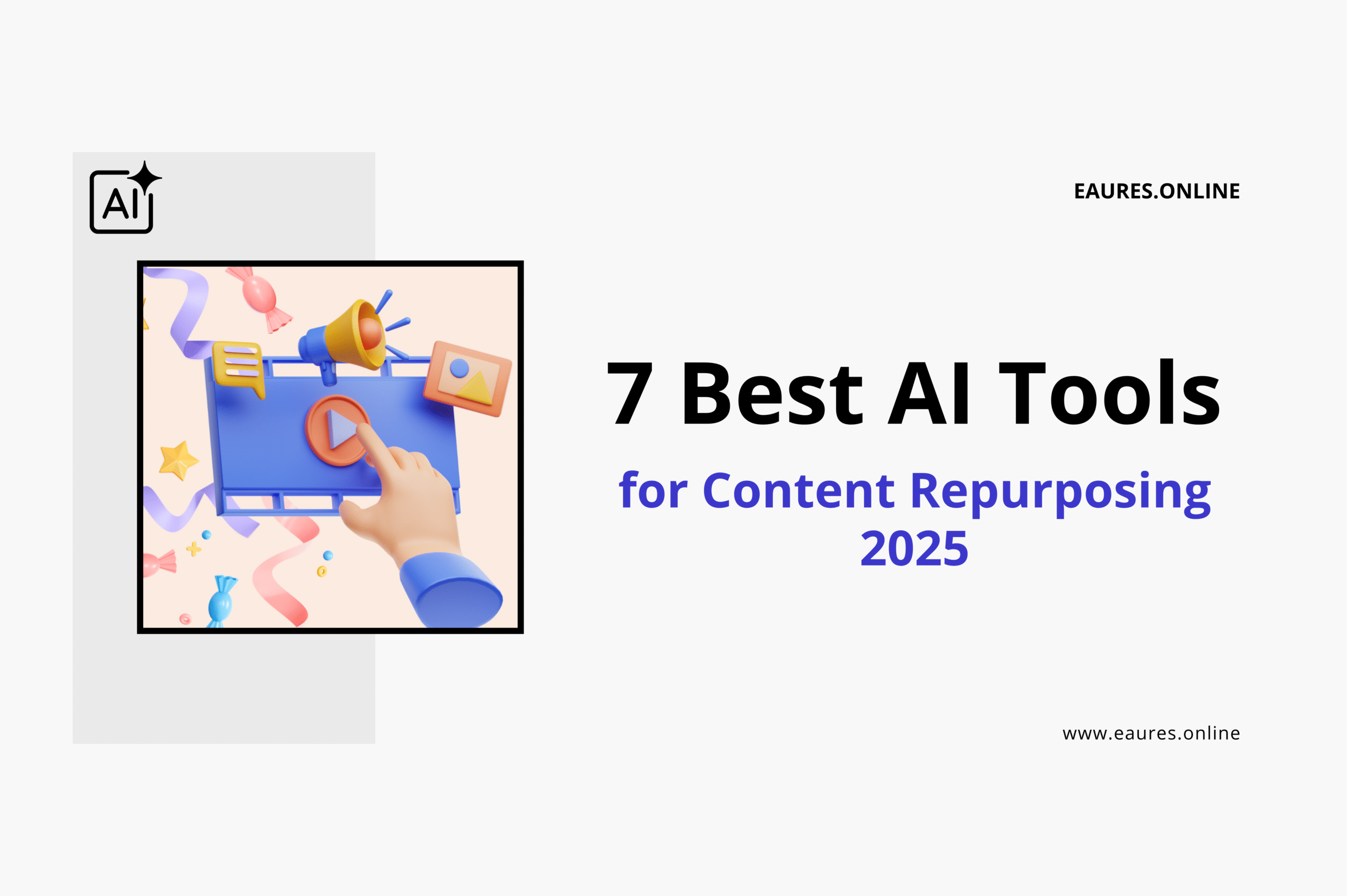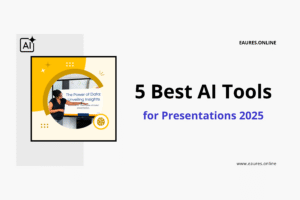Table of Contents
7 Best AI Tools for Content Repurposing 2025
Why Content Repurposing Matters in 2025
Content cycles move faster than ever, and audience preferences fragment across channels. The brands that win in 2025 are those that transform one strong idea into multiple, channel-native assets without sacrificing quality. That is where the Best AI Tools for Content Repurposing become strategic multipliers: they atomize long-form into short-form, revoice transcripts, convert webinars into articles, and scale visuals and video variations—all while preserving message consistency and brand tone.
Three structural shifts make repurposing essential this year:
- Omnichannel discovery: Search, Shorts/Reels, newsletters, forums, and communities are all top-of-funnel. Repurposing multiplies touchpoints with minimal lift.
- AI-native formats: Tools now generate outlines, hooks, CTAs, and platform-optimized edits at near real-time speed.
- Cost-control and quality: Rather than increasing headcount for every channel, teams use the Best AI Tools for Content Repurposing to maintain quality while expanding output.
For teams building a broader stack, it helps to align repurposing engines with adjacent capabilities like planning, writing, and post-production. If you are mapping your stack beyond this guide, you might explore practical complements via a curated overview of AI apps for content creators in 2025 inside a dedicated guide on AI apps for content creators that explains writing, design, and video workflow fit across the stack on a single page.

How We Evaluated the Best AI Tools for Content Repurposing
To surface the Best AI Tools for Content Repurposing in 2025, we evaluated each platform against criteria that matter in daily production:
- Input coverage and fidelity: How well the tool ingests video, audio, text, PDFs, slide decks, and URLs, and how accurately it transcribes, timestamps, and segments.
- Output breadth: Ability to generate platform-native formats (shorts, carousels, threads, blog posts, emails, show notes), including options for tone, voice, and compliance.
- Editing and control: Timeline editing, cut detection, filler removal, b-roll and captions, brand kits, style presets, and bulk processing.
- Workflow automation: Templates, pipelines, scheduling, and integrations with cloud storage, social platforms, and CMS.
- Quality of AI: Precision of summaries, coherence, hook strength, and channel fit of titles, thumbnails, and captions.
- Governance: Brand voice libraries, review/approval layers, audit trails, and content safety options.
- Pricing and scalability: Fair tiers for solo creators, agencies, and in-house teams; transparent usage limits.
If you want a quick market scan of categories and stack pairings before you choose, Dropbox’s resource on AI content repurposing tools provides a succinct overview of use cases and tool types within broader content operations.
The 7 Best AI Tools for Content Repurposing in 2025
Below are the Best AI Tools for Content Repurposing by use case. Each listing includes standout strengths, ideal users, and practical workflows to get ROI fast.
Repurpose.io
Repurpose.io is purpose-built to distribute and refactor content across social channels. It excels at turning long-form video and audio into platform-ready clips, captions, and schedules. Its pipelines automate repetitive steps so you publish consistently without manual uploads.
Why it stands out
- Fast pipelines from long-form to short video with automatic square, vertical, and horizontal formats.
- Channel-native captioning and auto-resizing for TikTok, Reels, Shorts, and LinkedIn.
- Bulk clipping from a single source, with default templates for hooks, overlays, and lower-thirds.
Best for
- Podcasters, YouTubers, and webinar hosts who need to publish multiple shorts per episode.
- Agencies managing multi-brand distribution with approval flows.
Quick workflow
- Feed your YouTube URL, podcast RSS, or cloud file, then select a clipping template, brand style, and platforms. The system generates multiple hooks, captions, and aspect ratios in one pass.
To benchmark alternatives and pipeline planning, the AIOSEO round-up of repurposing tools provides helpful context on categories and best-fit scenarios for content teams.
Descript
Descript is an all-in-one audio and video editor with transcript-based editing. It turns your long-form recordings into tight, publish-ready segments and supports b-roll, screen recordings, captions, and multitrack cleanup—everything you need for polished repurposed cuts.
Why it stands out
- Text-based editing lets you delete words to remove their audio/video segment.
- Studio Sound improves noisy recordings, and filler-word removal accelerates cleanup.
- Scenes, titles, and subtitles for social-native assets without leaving the editor.
Best for
- Content teams producing podcasts, tutorial videos, and educational clips.
- Creators who want precise control over editorial quality while still moving fast.
Quick workflow
- Import a webinar, clean with filler removal and Studio Sound, mark chapters, then export clips per chapter with unique captions and titles for each social channel.
If your broader goal is to streamline production beyond editing, this guide on the Best AI tools for productivity in 2025 shares complementary tools to orchestrate briefs, notes, and meeting intelligence that plug into post-production with less context switching.
OpusClip
OpusClip specializes in turning long-form talking-head videos into short-form viral clips. Its AI identifies high-retention moments, adds dynamic captions, tracks speaker framing, and suggests on-screen elements that lift watch time.
Why it stands out
- AI selects highlight moments with automatic punch-in/punch-out, subtitles, and emojis.
- Hook generation and auto-titles aligned to platform best practices.
- Batch processing for episode-level repurposing into a week’s worth of shorts.
Best for
- Coaches, educators, and SaaS leaders publishing thought-leadership videos.
- Social managers scaling consistent short-form calendars from webinars and lives.
Quick workflow
- Upload a 45-minute webinar, let OpusClip generate 10–20 shorts with strong hooks, then fine-tune auto-subtitles and export vertical formats with brand styling.
For a quick explainer on short-form workflows, a concise YouTube tutorial on repurposing into shorts demonstrates how highlight selection and social captions can be automated end-to-end for speed without losing coherence.
Quso AI
Quso AI focuses on end-to-end repurposing from transcripts and long-form text into multi-channel deliverables—articles, newsletters, threads, and social posts—with brand voice alignment and template-driven structure. It’s one of the Best AI Tools for Content Repurposing for teams who start with text and audio formats.
Why it stands out
- Ingests transcripts, notes, and URLs, then generates multi-channel outputs with consistent tone.
- Brand voice libraries and style presets to keep copy on-message across assets.
- Templates for blog posts, LinkedIn carousels, X threads, and email newsletters.
Best for
- B2B teams transforming webinars and podcasts into SEO articles and social narratives.
- Solo creators who want coherent long-to-short funnels without juggling multiple tools.
Quick workflow
- Add a transcript, pick a “pillar-to-threads-and-newsletter” template, apply your brand voice, and export assets into your CMS and social scheduler.
To see product specifics and templates, the Quso AI product page details its repurposing modules and content types, which can help you assess fit relative to your editorial cadence and channel mix.
Designrr
Designrr bridges text repurposing into designed assets, transforming blog posts, transcripts, and notes into eBooks, lead magnets, PDFs, and flipbooks. It is ideal when your repurposing goals include gated content or premium assets.
Why it stands out
- Imports from URLs, transcripts, and documents, generating clean layouts with consistent typography.
- Hundreds of templates for eBooks, white papers, and checklists with brand colors.
- Automatic table of contents, headers/footers, and image handling for professional polish.
Best for
- Marketers turning webinars and articles into lead magnets and downloadable resources.
- Agencies producing client-branded PDFs and thought-leadership assets at scale.
Quick workflow
- Paste a URL or transcript, choose an eBook template, apply brand styles, then export PDF and embed on your landing page with coherent internal linking.
If you want a broader comparison of repurposing approaches, Designrr’s guide to content repurposing tools outlines when design-led workflows outperform pure text-to-text generation for lead capture and distribution.
Notion AI
Notion AI is a powerful teammate for organizing long-form source material and generating derivative assets directly inside your knowledge base. With databases, wikis, and synced docs, you can centralize inputs and standardize outputs as reusable templates.
Why it stands out
- Central hub for research, transcripts, briefs, and publishing templates with AI assistance.
- Structured databases that map each source to multi-channel outputs and status.
- AI blocks that summarize, rephrase, and create variations aligned to brand voice.
Best for
- Teams that want planning, drafting, and repurposing in one workspace.
- Editorial operations managing multi-stakeholder reviews and approvals.
Quick workflow
- Create a “pillar content” database with relations to “derivative assets.” Use AI prompts in each asset template to generate newsletter, blog, and social variants, then move items through statuses from draft to published.
For small teams seeking stack-wide leverage beyond repurposing, a practical comparison of AI assistants for small business in 2025 highlights orchestration tools that offload admin, scheduling, and reporting so content producers spend more time crafting and less time coordinating.
Jasper
Jasper is an AI writing platform oriented toward brand voice consistency, campaign-level briefs, and multi-channel copy. It shines when you need repeatable outputs aligned to positioning and messaging frameworks.
Why it stands out
- Brand voice and style guides that enforce tone across blogs, ads, emails, and scripts.
- Campaign briefs turn a single idea into coherent assets across channels.
- SEO-aware drafting with outlines, headings, FAQs, and schema-friendly structures.
Best for
- B2B and eCommerce teams executing integrated campaigns with consistent messaging.
- Content teams that want governance and repeatability for high-volume copy.
Quick workflow
- Feed a product webinar summary into a campaign brief, generate a blog post, email sequence, X thread, LinkedIn post, and ad variations—then refine each asset with the brand voice set.
To see how repurposing overlaps with SEO strategy and editorial planning, AIOSEO’s deep dive into the best AI content repurposing tools serves as a helpful primer on search-aligned repurposing frameworks and selection criteria.
Bonus Pairings: Video, Ads, and Creator Workflows
Even the Best AI Tools for Content Repurposing benefit from a few carefully chosen companions:
- Video ad variants: If you repurpose thought leadership into performance creatives, a specialized guide to AI video makers for ads shows which editors are best for UGC styles, avatars, and rapid variant testing that aligns with ad platform constraints.
- Creator toolkits: For a broad creator-centric stack—writing, design, and video—a comprehensive overview of AI apps for content creators in 2025 maps tools to content lifecycles so repurposing stays connected to upstream ideation and downstream distribution.

Best AI Tools for Content Repurposing: Use Cases and Playbooks
To make these tools drive real-world results, map them to channel-first playbooks. Below are practical patterns that keep quality high and output scalable.
Webinar to omnichannel
- Input: 60-minute webinar recording + slides.
- Tools: Descript for transcript cleanup, OpusClip for shorts, Jasper for blog/email/social copy, Designrr for an eBook summary.
- Outputs: One article, one newsletter, 8–16 shorts, a LinkedIn carousel, and a downloadable PDF.
- Tip: Assign a single owner to maintain a master outline so hooks, CTAs, and stats stay consistent across assets.
Podcast to search + social
- Input: 40-minute podcast episode with guest expert.
- Tools: Descript for edits and show notes, Quso AI for threads and LinkedIn posts, Repurpose.io for cross-posting to YouTube, TikTok, and Instagram.
- Outputs: Show notes, SEO post, X thread, LinkedIn post, and 6–12 clips.
- Tip: Create a quote catalog from the transcript to seed graphics and carousel slides.
Blog to lead magnet
- Input: 2,500-word evergreen article.
- Tools: Jasper to expand into a definitive guide, Designrr to package as an eBook, Notion AI to generate a checklist and SOP.
- Outputs: Updated article, gated eBook, checklist PDF, and 3–4 social snippets.
- Tip: Use consistent data points and examples so the gated asset feels like an “upgraded” version rather than a duplicate.
For research and vendor perspectives on tool categories, Dropbox’s overview of AI content repurposing tools is a useful reference during stack planning, and Designrr’s comparison page offers examples of when to pivot from blog-first to design-led repurposing workflows.
Editorial Quality and Brand Governance
The Best AI Tools for Content Repurposing are only as strong as your editorial guardrails. Bake consistency into your process:
- Brand voice documentation: Define tone, vocabulary, banned phrases, and claim standards in a single source of truth that your tools reference.
- Evidence and accuracy: Keep a citation log in your workspace; when AI generates claims or stats, replace with verified sources before publishing.
- Legal and compliance: For regulated industries, add a review step tied to templates so sensitive outputs never bypass sign-off.
- Accessibility: Ensure captions, alt text, and contrast standards are part of templates rather than one-off tasks.
A helpful way to operationalize governance is to map templates to channels and set clear acceptance criteria—for example, “shorts must open with a 7–12 word hook, first cut within 2 seconds, captions at 86–92% screen width, high-contrast style, and a single CTA in the last 3 seconds.”

SEO-Aware Repurposing Without Duplication Risk
Search performance thrives on reinforcement, not repetition. Use these practices to avoid duplication and improve topical authority:
- Unique angles per asset: Turn a single pillar into complementary derivatives—how-to, case-study, checklist, and FAQ—rather than near-duplicates.
- Structured data and internal linking: Add schema where appropriate and connect derivatives back to the pillar article.
- Canonicals and summaries: When summarizing long-form into shorter posts, use canonical links where relevant; otherwise, rewrite with unique examples and updated data.
- Entity consistency: Define key entities, product names, and datasets consistently to strengthen topical signals across assets.
If you need a broader set of operational tools to support this, the page detailing the Best AI tools for productivity in 2025 shows how meeting notes, task automations, and content calendars can make your repurposing cadence more predictable and measurable.
Metrics That Matter in 2025
Track the metrics that reflect actual repurposing impact:
- Production velocity: Assets produced per source within SLA.
- Channel-native engagement: Hook retention for shorts, scroll depth for articles, and click-to-open for email.
- Assisted conversions: How often repurposed assets appear on paths to goal completion.
- Distribution coverage: Percentage of target channels receiving at least one derivative per source.
- Cost per asset: Time and spend divided by number of high-quality derivatives shipped.
Use dashboards that tie assets to source content and flag bottlenecks. Measure “time-to-first-derivative” as a leading indicator of operational health.

Pricing and Licensing Considerations
When comparing the Best AI Tools for Content Repurposing, price is more than a monthly number:
- Input and output limits: Check minutes of video, words, and number of exports.
- Render priorities: Some plans throttle during peak times; evaluate against your schedule.
- Team seats and roles: Ensure editor, reviewer, and publisher roles are available without extra fees that break your workflow.
- Brand kits and storage: Verify that brand assets, fonts, and cloud integrations are included in your tier.
Where vendors publish transparent comparisons, the AIOSEO round-up of repurposing tools and Dropbox’s resource on AI content repurposing tools provide useful context as you assess cost-to-capability tradeoffs.
Implementation Roadmap: 30-60-90 Days
- 0–30 days: Pick two tools that cover your top channels. Build three templates: “webinar-to-shorts,” “podcast-to-threads,” and “blog-to-eBook.” Ship one full cycle.
- 31–60 days: Add governance. Create brand voice libraries, caption standards, and QC checklists. Automate two pipelines (e.g., Repurpose.io for shorts and Notion AI for checklists).
- 61–90 days: Expand channels. Introduce a design-led asset via Designrr and add Jasper for campaign-level consistency. Roll in a lightweight KPI dashboard.
Throughout, keep an eye on tool overlap and context switching. It is better to master two of the Best AI Tools for Content Repurposing than to juggle six without process discipline.
The Bottom Line
The Best AI Tools for Content Repurposing turn a single strong idea into a portfolio of channel-ready assets while preserving brand voice and editorial quality. For 2025, the standouts span video-first editing and clipping (Descript, OpusClip, Repurpose.io), text-to-multichannel orchestration (Quso AI, Jasper, Notion AI), and design-led packaging (Designrr). Pair two or three that align with your sources and channels, codify your templates and guardrails, and build a cadence that compounds every campaign.
For additional context, AIOSEO’s analysis of repurposing tools, Designrr’s comparison page, and Dropbox’s round-up of AI content repurposing solutions each offer vendor perspectives that can sharpen your buying criteria. If you also produce short-form ads from your repurposed content, a dedicated resource on AI video makers for ads explains which platforms are built for rapid variant testing tied to ROAS, which can materially improve performance from the same source footage.




